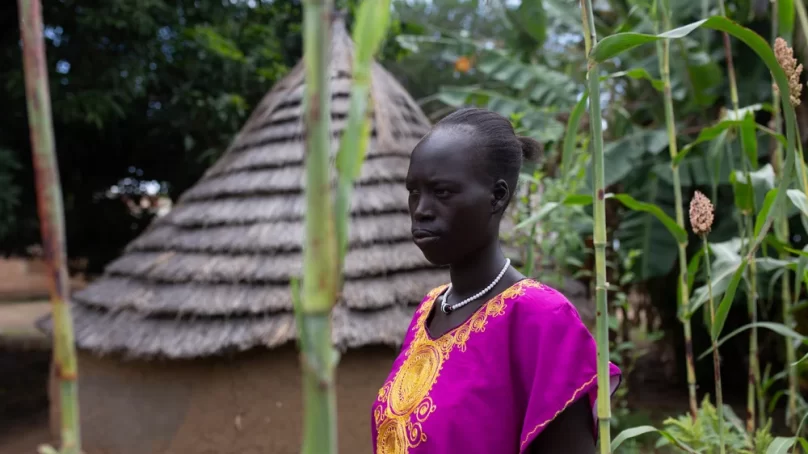
It is just over four years since South Sudan’s main warring parties signed a peace agreement that was supposed to end a five-year civil war that killed at least 400,000 people and plunged parts of the country into famine.
Yet some humanitarian indicators are now worse than they were even during that conflict as the peace deal drives new violence, and the transitional government – which was supposed to organise elections in December – extends its rule by two more years.
Recent conflicts – together with extreme flooding and economic dislocation – have created a renewed famine risk: Almost 8 million of the country’s 12 million population are severely hungry – the highest number since South Sudan’s independence in 2011.
Russia’s invasion of Ukraine has worsened the situation. Aid groups have pared back assistance as donors reallocate budgets, while food price inflation has eroded people’s purchasing power and the capacity of communities to help their most vulnerable.
“In the past, if you had food in your home and learnt others had nothing to eat, you would give half to other households,” said Athiang Matong, a 25-year-old from Warrap, a northern state impacted by flooding and conflict. “But none of this is now functioning.”
The following humanitarian briefing is based on two weeks of reporting in Juba, the capital, and in Warrap’s Greater Tonj region. We spoke with dozens of community leaders, South Sudanese researchers and civil society groups.
Although the briefing focuses on current events, the humanitarian crisis here has a much longer history – of slavery and colonialism, and of long civil wars that dispossessed millions and produced a predatory ruling elite supported by international actors.
The current transition commenced in 2020 after President Salva Kiir formed a unity government with his wartime rival, Vice President Riek Machar. The leaders pledged to support the peace agreement and bury their long-standing differences.
Yet much of the agreement is unimplemented, and Kiir is accused of using the peace process to weaken and co-opt rivals. Clashes between opposition splinter groups, and between Kiir and Machar’s forces, have displaced tens of thousands of people this year.
Meanwhile, militias and community defence groups – neglected by a peace deal focused on formal fighting forces – are engaged in conflicts around the country. The latest violence, involving groups in the north, killed 25 people just last week.
Edmund Yakani, a civil society activist, said he has counted over 30 major local conflicts in recent years, of which he argues none have been properly resolved. “Almost half of the country is fighting itself,” Yakani explained from his office in Juba.
These so-called subnational conflicts have a severe impact on people. Militias are often closely related to the communities they are targeting and know how to inflict maximum damage – from mass cattle theft to organising raids during planting and harvest periods.
Violence involving local militias and cattle raiding has been so bad in Greater Tonj in recent months that Athiang Matong said her community gave events a name: Riang Baai, which means disaster of the home area in the Dinka language.
Athiang Matong is a 25-year-old mother of four from Warrap state. She escaped conflict earlier this year and said people from her community have been struggling to support each other. “Each one is trying to sustain the lives of their family,” she said.
“When a disaster involves the death of a human being, that is when we give it a name,” said Matong, who is 25 and escaped to the town of Thiet along with her four children back in June. “Conflict has caused havoc to my household,” she added.
The fighting in Greater Tonj and other parts of the country has several layers. According to residents, much of it is driven by local concerns, from redress for past violence to the frustrations of young people who see few opportunities, even during peacetime.
Security forces have been trying to disarm militia groups in some states, but trust in the army is low, said Mario Lau, a government official in Tonj South County. “You might see that next year youth take guns again because they feel they are not protected,” he said.
Subnational conflicts can also reflect national divisions, since they regularly pull in government and opposition forces – the majority of whom have still not joined a unified national army, as was stipulated by the peace accord.
Conflicts are tied to national elites too. Commanders and politicians have been competing for power within the transition by mobilising local groups that will fight for their cause – a form of politics that the peace agreement is seen as entrenching.
“In trying to bring up your image or personality to be recognised, you have to mobilise youth at the state and county level,” said Michael Madit Akot, a youth leader in Warrap, the home state of many South Sudanese elites and a major theatre of recent violence.
The involvement of national elites makes subnational conflicts harder to resolve. Peacebuilding organisations, for example, focus on bringing conflicting communities together for workshops and dialogues – yet they often overlook those pulling the strings.
Still, communities do have tools to resolve conflicts and defy manipulation, said Julia Duany, a civil servant and peace activist who authored a book called Making Peace and Nurturing Life: A Memoir of an African Woman About a Journey of Struggle and Hope.
“Politicians have divided people, but the time will come when people will realise that we are not benefiting from what they are doing,” Duany, who was involved in various grassroots initiatives that helped resolve communal strife in the 1990s, told The New Humanitarian.
Conflict isn’t the only issue driving humanitarian needs: A fourth year of mass flooding has impacted almost one million people so far in 2022, according to the UN’s emergency aid coordination agency, OCHA.
- The New Humanitarian report











